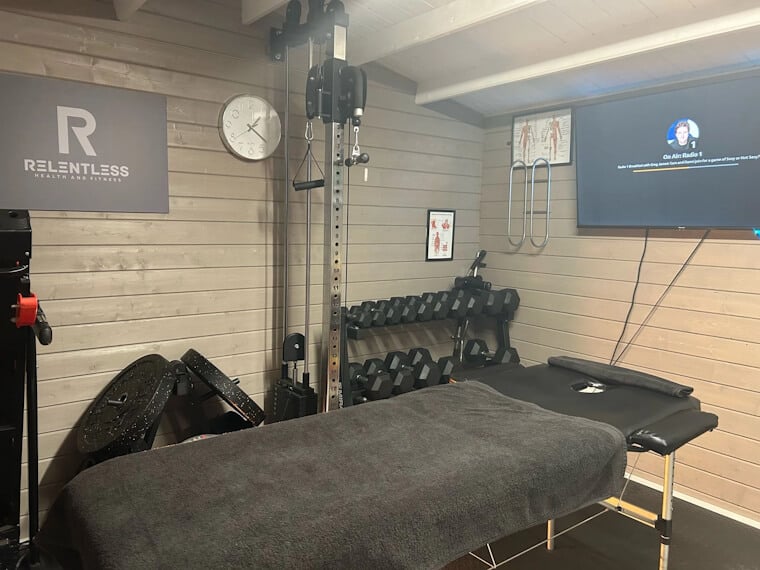Even if you’re not engaged in intense physical activity or sports, a sports massage can still offer several benefits. Here are some reasons why you might consider a massage even if you’re not highly active:
- Alleviation of Everyday Aches and Pains: Even routine activities like sitting at a desk for extended periods or performing household chores can lead to muscle tension and discomfort. A deep tissue massage can target these areas and provide relief.
- Stress Reduction: Daily life can be stressful, and this tension often manifests physically. Massage techniques can help relax both the body and mind, promoting a sense of calm and well-being.
- Improved Circulation: Massage promotes blood flow, which can be particularly beneficial for those who spend long hours in sedentary positions. Improved circulation can contribute to better overall health.
- Enhanced Flexibility and Range of Motion: Regardless of your level of physical activity, maintaining flexibility is crucial for preventing injuries and maintaining overall mobility. Deep tissue massage techniques can help increase flexibility and range of motion.
- Posture Improvement: Poor posture is a common issue in today’s digital age. Deep tissue massage can target specific muscle groups to help improve posture, reducing strain on the spine and other areas.
- Release of Trigger Points: Trigger points are localized knots of tension within muscle tissue. They can cause pain and refer pain to other areas of the body. Massage techniques can help identify and release these points, providing relief.
- Preventive Care: Regular massages can help identify and address potential issues before they escalate into more serious problems. It’s a proactive approach to maintaining physical well-being.
- Mental and Emotional Benefits: Massage therapy, including sports massage, has been shown to reduce anxiety and improve mood. It provides an opportunity for relaxation and self-care, which can have a positive impact on mental health.
Sports Massage for Injuries
Sports massage is a therapeutic technique commonly used to address various injuries and conditions associated with sports and physical activity. Some common injuries treated with massage include:
- Muscle Strains and Sprains: Deep tissue massage can help alleviate pain and promote healing in strained or sprained muscles by increasing blood flow and reducing tension.
- Tendonitis: It can aid in reducing inflammation and promoting blood flow to the affected tendons, which can help in the healing process.
- Overuse Injuries: These often occur due to repetitive motions or overtraining. Massage can target specific areas to relieve tension and promote recovery.
- Delayed Onset Muscle Soreness (DOMS): After intense exercise, DOMS can occur. Massage can help alleviate this soreness and speed up the recovery process.
- IT Band Syndrome: Sports massage can target the iliotibial band, a thick band of tissue running along the outside of the thigh, to alleviate pain and tension.
- Shin Splints: Massage techniques can help reduce pain and inflammation associated with shin splints, a common lower leg condition in athletes.
- Rotator Cuff Injuries: Massage can be used in conjunction with other treatments to alleviate pain and tension in the shoulder area.
- Back Pain: Deep tissue massage can address muscular issues contributing to back pain, particularly in athletes engaged in activities with repetitive motions or heavy lifting.
- Joint Issues: While massage primarily focuses on soft tissue, it can indirectly help with joint issues by relieving tension in the surrounding muscles.
- Postural Issues: Athletes may develop postural problems due to their sport. Massage can assist in releasing tension and improving posture.
Modern life can be tough on our bodies. Whether it's sitting at a desk all day, keeping up with chores at home, or just trying to manage the everyday hustle, it's no surprise that aches and pains start to settle in. But you don’t have to just put up with it. That’s where sports massage comes in.
Despite the name, it’s not just for athletes. Sports massage is for anyone feeling the strain—whether you're dealing with tight shoulders, a sore back, or just feeling generally worn out. This hands-on therapy helps ease muscle tension, reduce discomfort, and bring a sense of balance back to your body.
It’s more than just relief—it’s a way to unwind, recharge, and take care of yourself. With regular sessions, sports massage can support your overall well-being, helping you move more freely and feel more at ease in your own skin.
So, whether you’re an office worker, a parent, or someone just needing a little TLC, sports massage offers a simple, effective way to feel better—one session at a time.
Sports Massage FAQ
